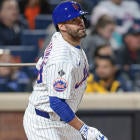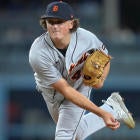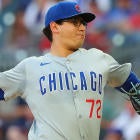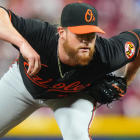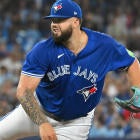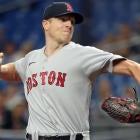There's no question that the quality of the National League shortstop pool far exceeds that of the junior circuit. While players like Jhonny Peralta and Derek Jeter will set the standard for their position in the American League with RC/27s in the 5.0 to 5.5 range, there are nine regular shortstops in the National League who should match or surpass that level of productivity. Once again, the Three Rs -- Hanley Ramirez, Jose Reyes and Jimmy Rollins -- lead the NL's pack of offensively-minded shortstops, and each is among the most valuable players in Fantasy.
The Elite: When Ramirez broke in with the Marlins in 2006, he quickly put himself on a par with Reyes and Rollins with his impressive combination of power and speed. In elevating his power game to 30-homer status, while remaining a threat in the batting average and stolen base categories, he has pulled away from the NL's two other elites. Reyes and Rollins are still far enough ahead of other shortstops to be worthy of first round picks, but Ramirez is valuable enough to merit the first or -- if you prefer David Wright -- second pick overall in virtually any format.
Cohort Analysis: Jose Reyes vs. Jimmy Rollins. Last season, Rollins reverted to being the groundball hitter he was prior to 2006. This did no damage to his batting average (though BABIP dropped it about 10 points) or his stolen base total, but it killed him in homers, runs scored and RBI. Even a partial return to his power hitting ways would put him back on a par with Reyes, but maybe the "old" Rollins is now the "new" Rollins. Reyes underwent a similar power downturn in '07 and subsequently recovered, but owners don't count on Reyes for homers in the same way. Until Rollins can prove that he can restore the core of his Fantasy game, Reyes is the safer pick.
|
|
||||
| Player | 2009 projection | 2008 | 2007 | 2006 |
| Hanley Ramirez | 8.0-8.5 | 8.42 | 8.34 | 6.31 |
| Jose Reyes | 6.0-6.5 | 6.39 | 5.74 | 6.59 |
| Jimmy Rollins | 6.0-6.5 | 5.96 | 6.91 | 5.94 |
Solid Mixed Leaguers: There is so much depth in the second tier of NL shortstops that there are half a dozen players from this group alone who could be the top shortstop in the AL. Stephen Drew, J.J. Hardy and Troy Tulowitzki are the Jhonny Peraltas of the NL, possessing 20-homer power and the ability to hit .280, but offering little help with stolen bases. Rafael Furcal, Cristian Guzman and Yunel Escobar profile more like Derek Jeter, providing considerably less power than Drew, Hardy and Tulowitzki, but compensating with the possibility of a .300 average. Mixed league owners who wait longer to pick their shortstop can still get stolen base help, along with a .290 average, from either Clint Barmes or Ryan Theriot.
Cohort Analysis: J.J. Hardy vs. Troy Tulowitzki. After a season marred by a terrible start out of the gate and injuries, Tulowitzki would like to forget 2008. But should owners wipe their memories clean of this disaster? Tulo did hit .327 in the second half, but with no more power than he did in the first half. Entering 2009 with a clean bill of health, it's entirely possible that he could return to being the 24 HR, 99 RBI force that he was in his rookie year. However, Hardy's Isolated Power has grown steadily since his rookie season, and he has shown every sign of being able to repeat last season's 24 HR, .283 batting average performance. Even with the promise of a comeback season for Tulowitzki, there is little risk in going for the more consistent Hardy first.
|
|
||||
| Player | 2009 projection | 2008 | 2007 | 2006 |
| Stephen Drew | 5.5-6.0 | 6.11 | 4.26 | 7.17 |
| Rafael Furcal | 5.0-5.5 | 10.14 | 4.34 | 6.27 |
| Cristian Guzman | 5.0-5.5 | 5.53 | 7.27 | N/A |
| J.J. Hardy | 5.0-5.5 | 5.51 | 5.08 | 3.65 |
| Yunel Escobar | 5.0-5.5 | 4.67 | 6.58 | N/A |
| Troy Tulowitzki | 5.0-5.5 | 3.96 | 5.98 | N/A |
| Ramon Vazquez | 4.5-5.0 | 5.76 | 3.77 | N/A |
| Clint Barmes | 4.5-5.0 | 5.16 | N/A | 2.91 |
| Ryan Theriot | 4.5-5.0 | 4.97 | 4.14 | 7.85 |
| Edgar Renteria | 4.5-5.0 | 3.88 | 6.93 | 5.53 |
NL-Only Leaguers: Miguel Tejada and Khalil Greene should provide plenty of at-bats, but neither can be relied upon to be the run producers they once were. Playing time is less certain for David Eckstein and Emmanuel Burriss, and Alex Gonzalez needs to show that his knee is healthy. Even if all goes well for these latter three in Spring Training, they are last resorts, even in NL-only formats.
Cohort Analysis: Miguel Tejada vs. Khalil Greene. With his steady loss of power, Tejada has essentially become the NL's Michael Young, but with even fewer steals and walks. That isn't all bad, since Miggy still has the contact skills to hit in the .280s. We can't say that for Greene, who went whiff happy after a 27-HR season in 2007. The bigger problem for Greene is that he, too, saw his Isolated Power go in the tank last season. The 29 year-old Cardinal stands a better chance than Tejada of regaining his home run stroke, but before investing a pick on this low-average hitter, I would want to see some evidence that he fixed what ailed him in the power department. In any event, whatever advantages Greene can gain in the home run and runs scored categories, they won't likely make up for the 30-to-40 point edge that Tejada will have in batting average.
|
|
||||
| Player | 2009 projection | 2008 | 2007 | 2006 |
| David Eckstein | 4.0-4.5 | 4.22 | 5.16 | 4.44 |
| Emmanuel Burriss | 4.0-4.5 | 4.17 | N/A | N/A |
| Miguel Tejada | 4.0-4.5 | 3.79 | 5.25 | 6.55 |
| Khalil Greene | 4.0-4.5 | 2.88 | 4.59 | 4.41 |
| Alex Gonzalez | 4.0-4.5 | N/A | 4.93 | 4.05 |
The Rest: Making contact is the one skill that Aaron Miles, Jack Wilson and Luis O. Rodriguez own, which renders them about as useful for Fantasy as Juan Pierre without the speed. In other words, not useful at all, except in the deepest of leagues. Despite good contact skills, Brendan Ryan probably won't help much with batting average, but if he picks up regular at-bats as the patented Tony LaRussa super-utility guy, he could provide 10 to 15 stolen bases.
|
|
||||
| Player | 2009 projection | 2008 | 2007 | 2006 |
| Aaron Miles | 3.5-4.0 | 4.78 | 3.95 | 3.95 |
| Jack Wilson | 3.5-4.0 | 3.67 | 5.39 | 3.86 |
| Luis O. Rodriguez | 3.0-3.5 | 3.54 | 2.47 | 3.40 |
| Brendan Ryan | 3.0-3.5 | 3.11 | 5.40 | N/A |
|
|
|
Runs Created per 27 Outs (RC/27) -- An estimate of how many
runs a lineup would produce per 27 outs if a particular player
occupied each spot in the order; ex. the RC/27 for Miguel Cabrera
would predict the productivity of a lineup where Cabrera (or his
statistical equal) batted in all nine spots; created by Bill James Component ERA (ERC) -- An estimate of a what a pitcher's ERA would be if it were based solely on actual pitching performance; created by Bill James Base Hits per Balls in Play (BABIP) -- The percentage of balls in play (at bats minus strikeouts and home runs) that are base hits; research by Voros McCracken and others has established that this rate is largely random and has a norm of approximately 30% Isolated Power -- The difference between slugging percentage and batting average; created by Branch Rickey and Allan Roth Walk Rate -- Walks / (at bats + walks) Whiff Rate -- Strikeouts / at bats |
Al Melchior was recently a Fantasy columnist and data analyst for Baseball HQ and will be providing advice columns for CBSSports.com. Click here to send him a question. Please put "Melchior" in the subject field.













